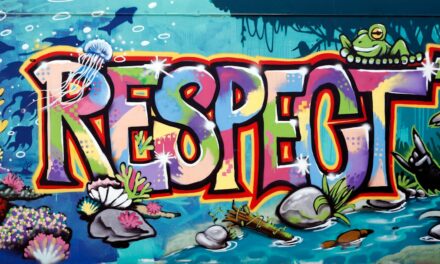Digital collages represent a fascinating intersection of traditional artistic practices and modern technology. At their core, digital collages are compositions created by combining various images, textures, and graphic elements into a single cohesive piece using digital tools. Unlike traditional collages, which rely on physical materials such as paper, photographs, and glue, digital collages allow artists to manipulate and layer images with remarkable precision and flexibility.
This medium has gained immense popularity in recent years, particularly with the rise of social media platforms where visual content reigns supreme. The applications of digital collages are as diverse as the artists who create them. They can serve as powerful tools for storytelling, allowing artists to convey complex narratives through visual means.
Many contemporary artists use digital collages to comment on social issues, explore personal identities, or create surreal landscapes that challenge viewers’ perceptions of reality. Additionally, digital collages are frequently employed in graphic design, advertising, and marketing, where eye-catching visuals are essential for capturing audience attention. As a result, this art form has become an integral part of contemporary visual culture, bridging the gap between fine art and commercial design.
Summary
- Digital collages are a combination of different images and graphics to create a new, cohesive piece of art or design.
- When choosing software for creating digital collages, consider factors such as ease of use, available features, and compatibility with your computer.
- Select and prepare photos for digital collages by ensuring they are high quality, have good lighting, and are relevant to the theme or concept of your collage.
- Use vector graphics in digital collages to add scalable and editable elements, and consider tips such as using layers and adjusting anchor points for better integration.
- Blend photos and vector graphics seamlessly in digital collages by paying attention to lighting, shadows, and perspective to create a cohesive composition.
- Enhance digital collages by adding text and other elements that complement the overall theme and design, while maintaining balance and visual interest.
- When composing digital collages, consider factors such as focal points, balance, and visual flow to create a harmonious and engaging composition.
- Complete your digital collage by adding final touches such as adjustments to colour and contrast, and export it for sharing or printing in the appropriate file format and resolution.
Choosing the Right Software for Creating Digital Collages
Selecting the appropriate software is a crucial step in the process of creating digital collages. Numerous applications cater to different skill levels and artistic needs, ranging from beginner-friendly options to professional-grade software. For those just starting out, programs like Canva or Adobe Spark offer intuitive interfaces and a plethora of templates that simplify the collage-making process.
These platforms often come equipped with drag-and-drop functionality, making it easy for users to experiment with various layouts and designs without a steep learning curve. For more experienced artists seeking advanced capabilities, Adobe Photoshop remains the industry standard. Its extensive range of tools allows for intricate editing and manipulation of images, enabling artists to achieve a high level of detail in their collages.
Additionally, software like Affinity Photo and GIMP provides powerful alternatives to Photoshop, often at a lower cost or even free. Ultimately, the choice of software should align with the artist’s goals and comfort level; experimenting with different applications can lead to discovering unique features that enhance one’s creative process.
Selecting and Preparing Photos for Digital Collages
The selection of images is a fundamental aspect of creating a compelling digital collage. Artists should consider the theme or message they wish to convey when curating their photo collection. High-quality images that resonate with the intended narrative will significantly enhance the overall impact of the collage.
It is essential to source images from reputable platforms that offer copyright-free or licensed content to avoid legal complications. Websites such as Unsplash, Pexels, and Pixabay provide a wealth of options for artists seeking diverse imagery. Once the images have been selected, preparing them for use in a digital collage is equally important.
This preparation may involve cropping, resizing, or adjusting the colour balance to ensure that all elements harmonise within the composition. Familiarity with basic photo editing techniques can greatly improve the quality of the final piece. Artists should also consider the resolution of their images; higher resolution files will yield better results when printed or displayed on larger screens.
By taking the time to carefully select and prepare photos, artists can create a more cohesive and visually striking collage.
Using Vector Graphics in Digital Collages: Tips and Tricks
Incorporating vector graphics into digital collages can elevate the artwork by adding depth and versatility. Unlike raster images, which are made up of pixels and can lose quality when resized, vector graphics are composed of paths defined by mathematical equations. This means they can be scaled infinitely without losing clarity, making them ideal for creating sharp lines and intricate designs within a collage.
Artists can find vector graphics on various platforms such as Freepik or Vecteezy, where they can access a wide range of styles and themes. When integrating vector graphics into a digital collage, it is essential to consider how these elements interact with photographic images. One effective technique is to use vector shapes as overlays or backgrounds that complement the photographs rather than compete with them.
Artists can experiment with transparency settings to create subtle effects that enhance the overall composition. Additionally, utilising contrasting colours between vector graphics and photos can help distinguish different elements within the collage while maintaining visual harmony.
Blending Photos and Vector Graphics: Techniques for Seamless Integration
Achieving seamless integration between photos and vector graphics is key to creating a polished digital collage. One effective method is to employ blending modes within your chosen software. These modes allow artists to control how layers interact with one another, enabling them to create unique effects that enhance depth and texture.
For instance, using a soft light blending mode can create a gentle interaction between a vector graphic and a photograph, allowing both elements to coexist harmoniously. Another technique involves using masks to control which parts of an image are visible or hidden. By applying masks to both photos and vector graphics, artists can create smooth transitions between elements, allowing for more organic compositions.
This technique is particularly useful when working with complex shapes or when trying to achieve a specific visual effect. By mastering these blending techniques, artists can elevate their digital collages from simple compositions to intricate works of art that captivate viewers.
Adding Text and other Elements to Enhance Digital Collages
Text can play a pivotal role in enhancing digital collages by providing context or adding an emotional layer to the artwork. When incorporating text into a collage, it is essential to choose fonts that complement the overall aesthetic of the piece. A bold sans-serif font may work well in modern compositions, while a delicate script font might be more suitable for romantic or whimsical themes.
The placement of text is equally important; it should be positioned in a way that guides the viewer’s eye without overwhelming other elements in the collage. In addition to text, artists can enrich their digital collages by incorporating other design elements such as patterns, textures, or illustrations. These additional components can help unify disparate images and create a more cohesive visual narrative.
For instance, using a subtle texture overlay can add depth to flat images, while geometric patterns can introduce an element of structure within an otherwise organic composition. By thoughtfully integrating text and other design elements, artists can create multi-dimensional collages that engage viewers on multiple levels.
Tips for Composition and Layout in Digital Collages
Effective composition is fundamental to creating visually appealing digital collages. One widely used principle is the rule of thirds, which suggests dividing the canvas into a grid of nine equal parts and placing key elements along these lines or at their intersections. This technique helps create balance and draws attention to focal points within the artwork.
Additionally, varying the scale of different elements can add interest; larger images can serve as focal points while smaller ones provide supporting details. Another important aspect of layout is ensuring that there is sufficient negative space within the composition. Negative space refers to the areas around and between subjects in an artwork; it allows viewers’ eyes to rest and helps prevent the collage from feeling cluttered.
Artists should strive for a harmonious balance between positive and negative space to create an inviting visual experience. By considering these compositional strategies, artists can craft digital collages that are not only aesthetically pleasing but also effectively communicate their intended message.
Final Touches and Exporting Your Digital Collage for Sharing or Printing
As the creation process nears completion, adding final touches can significantly enhance the overall quality of a digital collage. This may involve fine-tuning colour adjustments, sharpening details, or applying filters that unify the various elements within the piece. Artists should take care to review their work at different zoom levels to ensure that all details are polished and cohesive before finalising the piece.
Once satisfied with the final product, exporting the digital collage for sharing or printing is the next step. It is crucial to choose the appropriate file format based on how the artwork will be used; JPEGs are ideal for online sharing due to their smaller file size, while TIFFs or PNGs are better suited for high-quality prints due to their lossless nature. Additionally, artists should consider exporting at a resolution suitable for their intended use—typically 300 DPI for print and 72 DPI for web display—to ensure optimal quality across different platforms.
By paying attention to these final details, artists can confidently share their digital collages with the world, showcasing their creativity and skill in this dynamic art form.
If you are interested in creating digital collages by blending photos and vector graphics, you may also enjoy reading the article “Palette of Dreams”. This article explores the use of colour and texture in art, which can be helpful when creating visually striking digital collages. Understanding how different colours and textures work together can enhance the overall impact of your collage. Additionally, exploring different artistic perspectives, as discussed in the article “Artistic Perspectives”, can provide inspiration and new ideas for your digital collage creations.
FAQs
What is a digital collage?
A digital collage is a piece of artwork created by combining different elements such as photographs, illustrations, and other visual elements using digital tools and software.
What are the benefits of creating digital collages?
Creating digital collages allows for a high level of creativity and flexibility in combining different visual elements. It also provides the opportunity to experiment with different styles and techniques without the need for physical materials.
What software can be used to create digital collages?
There are several software options available for creating digital collages, including Adobe Photoshop, Adobe Illustrator, GIMP, and Canva, among others.
How can photos and vector graphics be blended in a digital collage?
Photos and vector graphics can be blended in a digital collage by using layers and blending modes in software such as Adobe Photoshop. This allows for seamless integration of different visual elements.
What are some tips for creating visually appealing digital collages?
Some tips for creating visually appealing digital collages include experimenting with different compositions, using a cohesive colour palette, and paying attention to the balance and harmony of the different elements.
Are there any copyright considerations when creating digital collages?
When creating digital collages, it’s important to ensure that you have the right to use the images and graphics that you incorporate. This may involve obtaining permission from the original creators or using royalty-free or public domain images.


